
Introducing a preview of SAFe 5.0
Hello Folks,
On behalf of the entire Scaled Agile team and the SAFe Contributors, we are delighted to announce a preview of SAFe® 5.0 for Lean Enterprises.
Why is this update important?
Globalization, fast-moving markets, disruption, the unprecedented pace of technological innovation. Organizations know that they need to transform—now—to compete. But their existing business models, organizational hierarchy, and technology infrastructure simply can’t keep up with how quickly the company needs to adapt.
Agile product delivery isn’t enough. You need business agility.
What is business agility?
Business agility lets you capitalize on emerging opportunities by empowering you to make quick decisions, allocate money, and align the right people to do the work. SAFe® 5.0 has the guidance to help you get there.
What began in software development is expanding to encompass the entire enterprise, changing how people work and how every aspect of the business is run. We’re now in the age of software—an interconnected, real-time world where every industry is a tech-enabled industry and every company is, at least in part, a software company. Organizations that master business agility are the ones that will thrive—not just survive.
Business agility happens when the entire organization—business and tech leaders, compliance, development, finance, legal, marketing, operations, sales, security, support—uses Lean and Agile practices to continually and proactively deliver innovative business solutions faster than the competition.
With guidance from SAFe 5.0, you can become the Agile business you need to be and win in the digital age. But the Framework by itself can’t orchestrate your transformation; it’s your people—teams and leaders—who make it happen. When agility permeates your organization, you can quickly adapt to new, macro conditions in your industry. Respond to new, competitive threats. Efficiently identify and deliver incremental customer value. Maintain quality in an evolving product and solution portfolio. Reconfigure teams and redeploy talent in response to changing business needs. In short: thrive in fast-moving markets.
Introducing the Seven Core Competencies of the Lean Enterprise
SAFe 5.0 is built around the Seven Core Competencies of the Lean Enterprise. These competencies include major rewrites to the original five competencies introduced in SAFe 4.6, along with two entirely new competencies—Organizational Agility and Continuous Learning Culture. The competencies are the primary lens for understanding and implementing SAFe, as illustrated in the Overview tab on the Big Picture. Each competency is a set of related knowledge, skills, and behaviors that together, enable enterprises to achieve business agility by delivering the best quality and value in shortest sustainable lead time. Each competency is summarized below.
Lean-Agile Leadership describes how Lean-Agile leaders drive and sustain organizational change by empowering individuals and teams to reach their highest potential. They do this through leading by example, adopting a Lean-Agile mindset, and leading the change to a new way of working. The result is more engaged employees, increased productivity and innovation, and successful organizational change.
Team and Technical Agility describes the critical skills and Lean-Agile principles and practices that high-performing Agile teams and teams of Agile teams use to create high-quality solutions for their customers. The result is increased productivity, better quality, faster time-to-market, and predictable delivery of value.
Agile Product Delivery is a customer-centric approach to defining, building, and releasing a continuous flow of valuable products and services to customers and users. This enables the organization to provide solutions that delight customers, lower development costs, reduce risk, and outmaneuver the competition.
Enterprise Solution Delivery describes how to apply Lean-Agile principles and practices to the specification, development, deployment, operation, and evolution of the world’s largest and most sophisticated software applications, networks, and cyber-physical systems.
Lean Portfolio Management aligns strategy and execution by applying Lean and systems thinking approaches to strategy and investment funding, Agile portfolio operations, and governance. These collaborations give the enterprise the ability to align strategy to execution, to meet existing commitments reliably, and to better enable innovation.
Organizational Agility describes how Lean-thinking people and Agile teams optimize their business processes, evolve strategy with clear and decisive new commitments, and quickly adapt the organization as needed to capitalize on new opportunities.
Continuous Learning Culture describes a set of values and practices that encourage individuals—and the enterprise as a whole—to continually increase knowledge, competence, performance, and innovation. This is achieved by becoming a learning organization, committing to relentless improvement, and promoting a culture of innovation.
Read more about the competencies in the What’s New in SAFe 5.0 article.
SAFe curriculum updating to SAFe 5.0
In early January 2020, Scaled Agile’s entire, role-based curriculum will be updated to reflect the changes in SAFe 5.0 and the new release will be moved to scaledagileframework.com. The previous version will relocate to v46.scaledagileframework.com.
Be sure to read the FAQs on training and certification as you prepare to upgrade to SAFe 5.0.
Thank you
We sincerely hope that this new version of SAFe helps you and your enterprise achieve the benefits you deserve for working so hard at building the world’s biggest and best software and systems.
We owe a special thanks to all of you in the SAFe community for your feedback and support. Your passion for the best SAFe possible has driven us to deliver what we like to think of as the most adaptable—and ‘competent!’—framework in the world.
Stay SAFe!
—Dean, Richard, Inbar, Harry, Steve, Luke, and the entire Scaled Agile team
Dean Leffingwell, creator of SAFe, Chief Methodologist
Richard Knaster, SAFe Fellow and Principal Consultant
Inbar Oren, SAFe Fellow and Principal Consultant
Harry Koehnemann, SAFe Fellow and Principal Consultant
Dr. Steve Mayner, SAFe Fellow and Principal Consultant
Luke Hohmann, SPC, Principal Consultant





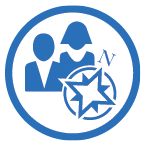
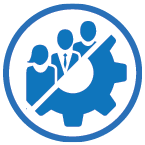
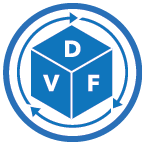
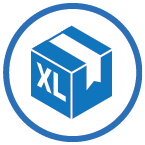
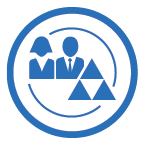
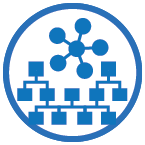
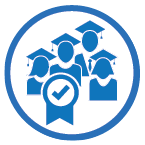

Girish Dandekar
Hi,
I am Girish Dandekar, SPC4 from TCS.
I have one comment on SAFe 5.0 pre-read:
In SAFe 5.0 article on organizational agility, the concept of dual operating system with hierarchical structure running in parallel with entrepreneurial network
is introduced. This is a very valuable concept since most of the organizations trying to implement SAFe have organizational hierarchy in place.
What are the divisions of responsibilities for these two structures (hierarchical and entrepreneurial) to work together in synergy without affecting speed and innovation
of entrepreneurial network? In my opinion, if this topic is addressed in the article in greater detail, that would be a great value-add.
Best Regards
Girish
Harry Koehnemann
Hi Girish. We are leveraging Kotter’s work to explain the need for both a value stream, product-centric organization alongside the traditional organization. SAFe provides the Lean-Agile practices to realize the product-centric one. However, SAFe doesn’t opine on the divisions between them. Certainly domain-specific management, talent acquisition (hiring, growing, etc.), practice and policy definition, etc. fall on the traditional side. And cross-domain, product-centric value delivery and execution fall on the value stream/SAFe side. Check out Kotter’s Accelerate book and other articles for deeper information as he is the source for these ideas. Thanks!
Bernie Clark
Congratulations! The addition of the two new Core Competencies entirely makes sense. I recall, when first learning SAFe back in 2012, that (as a RUP guy) I was dismayed at the lack of Business Modelling aspects. Dean said “Well, it is a Framework. If you want go and make suggestions about adding it, go ahead.” Needless to say, I did not take on the challenge. So glad that the excellent SAI team has taken it on. Now I am hoping SAFe will facilitate Design thinking and how we understand why and what the business system needs to do, plus how prod and dev operations satisfy those needs in lean and agile ways. It seems that we will be able to manage slices through the whole Business, not just the software. I see it as a quantum leap, pushing us into the outer shell of the business and business partnerships. I also see lots of reading and learning ahead!